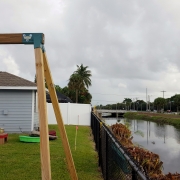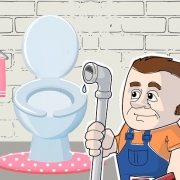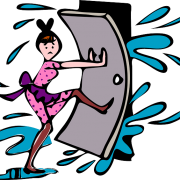Residents Using Public Land
Many people in southeastern Palm Beach County live adjacent to a Lake Worth Drainage District (LWDD) canal. To enhance their backyard, residents look to install landscape materials or structures such as swing-sets, fences, and patio decks. Often without realizing it, these enhancements are installed on LWDD’s rights-of-way which is publicly managed land.
Effective flood control depends on LWDD’s extensive network of canals to move stormwater away from homes after major weather events. Vegetation and other structures on the canal rights-of-way can severely hinder LWDD’s ability to keep residents safe during and after severe storms. Trees and large shrubs can topple over in high winds blocking emergency access along the canal bank or fall into the canal channel blocking the flow of water. Encroachments not only endanger the residents adjacent to the canal but also individuals living miles inland.
Maintaining water flow within the canal channel and access along the right-of-way is vital for public safety. It requires daily maintenance by LWDD crews as well as the removal of identified encroachments. LWDD encourages all property owners to contact us prior to the installation of landscaping or structures to ensure it is not located on public land. No matter how expensive the installation or beautiful, unauthorized encroachments will have to be removed. Considering installation and removal, this can be a costly mistake for homeowners.
If you live adjacent to a canal, contact LWDD staff at info@lwdd.net to verify the location of your next project and help us keep you and your neighbors safe.






